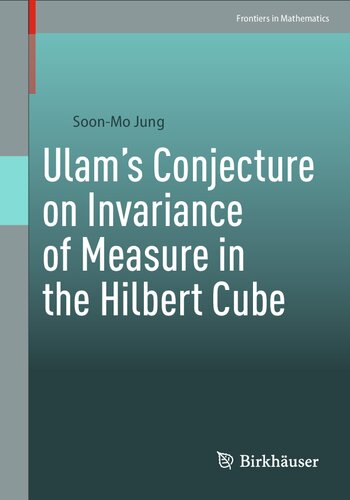

Most ebook files are in PDF format, so you can easily read them using various software such as Foxit Reader or directly on the Google Chrome browser.
Some ebook files are released by publishers in other formats such as .awz, .mobi, .epub, .fb2, etc. You may need to install specific software to read these formats on mobile/PC, such as Calibre.
Please read the tutorial at this link: https://ebookbell.com/faq
We offer FREE conversion to the popular formats you request; however, this may take some time. Therefore, right after payment, please email us, and we will try to provide the service as quickly as possible.
For some exceptional file formats or broken links (if any), please refrain from opening any disputes. Instead, email us first, and we will try to assist within a maximum of 6 hours.
EbookBell Team

4.8
104 reviewsThis book discusses the process by which Ulam's conjecture is proved, aptly detailing how mathematical problems may be solved by systematically combining interdisciplinary theories. It presents the state-of-the-art of various research topics and methodologies in mathematics, and mathematical analysis by presenting the latest research in emerging research areas, providing motivation for further studies. The book also explores the theory of extending the domain of local isometries by introducing a generalized span.
For the reader, working knowledge of topology, linear algebra, and Hilbert space theory, is essential. The basic theories of these fields are gently and logically introduced. The content of each chapter provides the necessary building blocks to understanding the proof of Ulam’s conjecture and are summarized as follows: Chapter 1 presents the basic concepts and theorems of general topology. In Chapter 2, essential concepts and theorems in vector space, normed space, Banach space, inner product space, and Hilbert space, are introduced. Chapter 3 gives a presentation on the basics of measure theory. In Chapter 4, the properties of first- and second-order generalized spans are defined, examined, and applied to the study of the extension of isometries. Chapter 5 includes a summary of published literature on Ulam’s conjecture; the conjecture is fully proved in Chapter 6.